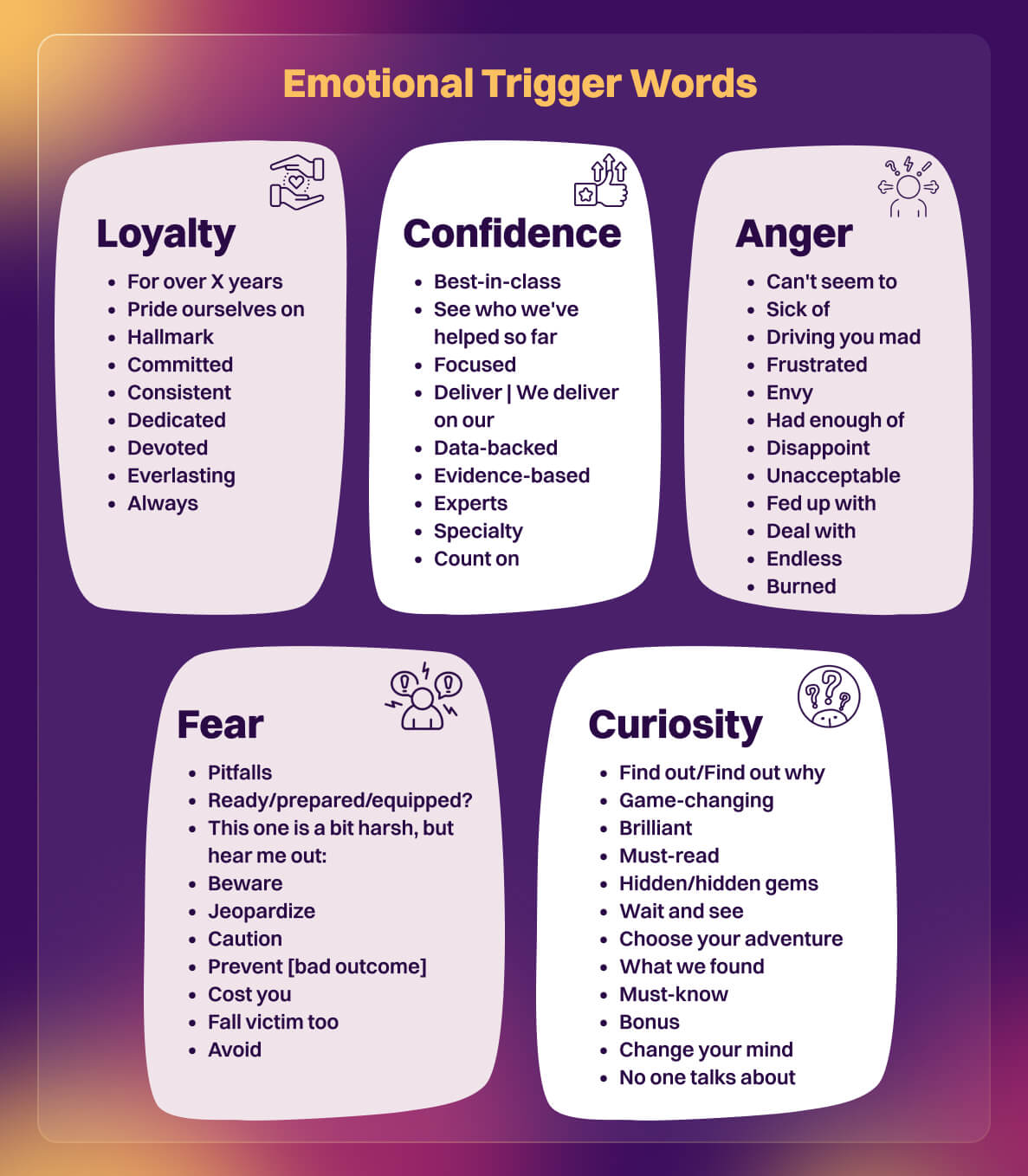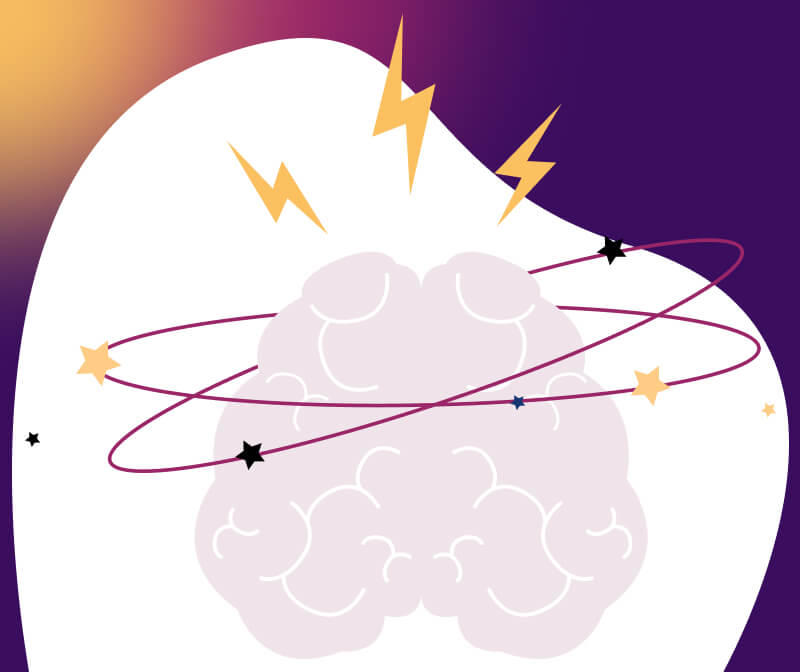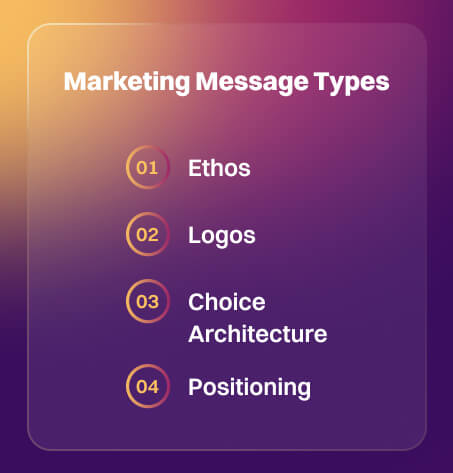
4 Psychology-Backed Outbound Messaging Strategies for SDRs
Have you ever wondered why some messages grab your attention while others fade into the background? The answer is hidden in understanding the secrets of human psychology triggers. These triggers can be appealing colors, words, or the presentation of a message in a specific manner.
Now, imagine using them in your outbound messaging!
The result could be beyond your expectations. In fact, your prospects' subconscious factors can influence their purchase decisions by 95%.
In this blog, we'll unravel the science behind crafting irresistible outbound messages. Plus, we’ll explore practical tips, dos, and don'ts, and unleash the power of psychological insights to enhance your marketing skills.
What Is the Marketing Message Psychology?
The term "marketing message psychology" is a concept where you synchronize your content, communication, and strategies with unconscious human behavioral patterns. These are numerous predictable behaviors that humans willingly display when:
- Solving problems
- Comprehending information
- Making decisions
Now, let's learn the ways to use these patterns to influence your prospect's decision in your favor.
Top 4 Strategies for Outbound Messaging That Influence Decision-Making
These strategies cover different ways you can influence your target audience's decision. You’ll get to dive deep into their psyche and strike the right chord.
So, let us explore these outbound messaging strategies:

1. Resonate With the Audience Using Emotional Trigger Words
You can connect with your target consumers on a whole new level with emotion-triggering words. These phrases help you transform your brand into a character with a distinct tone, voice, and personality.
Among all, we recommend you focus on LCFAC, i.e.:
- Loyalty
- Confidence
- Fear
- Anger
- Curiosity
These five emotions make your audience sit up and take notice, prompting them to take action in various ways. It’s because the emotional brain area processes sensory information faster than the cognitive area by 20%.
Let us understand them in more detail:
-
Loyalty to Your Brand Mission
Empower your business with language that radiates strong leadership. Watch as it cascades through your team, resonating with your employees and catching your target customers’ attention.
Check out this list of impactful words to infuse that leadership vibe:
-
- For over X years
- Pride ourselves on
- Hallmark
- Committed
- Consistent
- Dedicated
- Devoted
- Everlasting
- Always
-
Loyalty to Your Customers and Theirs to You
Show your potential customers your existing clients are satisfied and consistently return. It demonstrates your helpfulness and unwavering commitment to their ongoing success. So, ensure to incorporate these words to showcase your reviews and testimonials:
-
- Community
- Connected
- Customer success
- Family
- Join X others
- Long-time
- Members
- Throughout your/our journey
- See why our customers keep returning
-
Confidence
Your confidence in your services, products, mission, and values puts your brand as an authority. It makes your prospects turn to you to get ongoing support. It also helps your solution to stand out among competitors.
Here are some words you can use in marketing messages:
-
- Best-in-class
- See who we've helped so far
- Focused
- Deliver | We deliver on our
- Data-backed
- Evidence-based
- Experts
- Specialty
- Count on
-
Fear
Your target consumers seek solutions to escape the negative emotions associated with their ongoing challenges. These involve stress, anxiety, exasperation, and fear. Among these, fear is a compelling motivator for prospects to take action. They may feel like losing something valuable or falling short, among other concerns.
Keep in mind that instilling a sense of fear is only impactful when you position your brand as the solution. Here are words that can help you:
-
- Pitfalls
- Ready/prepared/equipped?
- This one is a bit harsh, but hear me out:
- Beware
- Jeopardize
- Caution
- Prevent [bad outcome]
- Cost you
- Fall victim too
- Avoid
-
Anger
Akin to fear, anger also evokes negative emotions in prospects towards their challenges. However, instead of worrying about possible undesirable outcomes, prospects are concerned about their present situation. In fact, two in five anger-inducing content is likely to go viral.
Thus, they would seek a reliable partner. It allows you to apply a problem-agitate-solution messaging approach. It requires you to:
- Describe the problems your customers face in detail.
- Explore these issues further to make them feel more troubled.
- Present your solution as a helpful answer to their problems.
Here is the list of words that'll help you induce anger in your target customers:
-
- Can't seem to
- Sick of
- Driving you mad
- Frustrated
- Envy
- Had enough of
- Disappoint
- Unacceptable
- Fed up with
- Deal with
- Endless
- Burned
-
Curiosity
When you evoke curiosity in your audience, it'll lead them to explore your brand and engage with your content. Moreover, people generally have a powerful allure to unpredictability when rewards are involved.
However, you can not add curiosity to all your messaging. It works well in specific situations only.
For example, prospects prefer clarity over curiosity in your landing pages, ads, and free trials. They want a clear expectation of what clicking entails. Conversely, curiosity can be a powerful motivator for clicks for blog posts and email subject lines.
So, here are the words that can make your prospects curious about your offerings:
-
- Find out/Find out why
- Game-changing
- Brilliant
- Must-read
- Hidden/hidden gems
- Wait and see
- Choose your adventure
- What we found
- Must-know
- Bonus
- Change your mind
- No one talks about
2. Apply Psychology Principles to Marketing Messages
Combine your knowledge of emotion-triggering words with different concepts of messaging effects. These are as follows:
-
The Pratfall Effect

You can also call the PitFall effect the Blemishing Effect. Its concept is that a competent entity (your brand) becomes more likable when it makes a mistake.
It is logical because people are drawn toward things/experiences they can relate to. And everyone can relate to making mistakes.
Thus, you must apply the PitFall effect in your marketing messages. It will:
- Humanize your brand
- Establish yourself as an approachable expert
- Foster connections with your audience
One way to apply the effect is to teach your target audience from your own mistakes.
You can craft a blog post detailing the mistakes you've encountered and the lessons learned.
For example, "I invested $4M in Google Ads – Here the 5 Major Mistakes I Made."
It enhances your appeal. Plus, it prevents others from staying clear of similar pitfalls.
-
The Novelty Effect

When a change in messaging yields positive outcomes, we call it the Novelty Effect. However, the improvement may not be because of the change but simply because it took place. You can apply this concept in two ways:
a) Update Your Copy and Creative Elements Regularly
If altering a page's title or headline boosts performance, identify when its Novelty Effect diminishes. Then, make it a routine to update them within that period. Consider rotating between three variations of the same offer.
b) Diversify Your Blog Content
Avoid the pitfall of publishing similar blog posts. To prevent becoming background noise for your audience, write various types of posts. It ensures your blog remains a novelty in its own right. You can try blog types, such as:
-
- Q&A
- Listicles
- Mistakes to avoid
- Eye-opening stats
- Ideas and strategies
- Templates and examples
- Guest posts
- Personal insights
- Tool or resource round-up
- Original data
- Success stories
-
The Focusing Effect

As per the concept of the Focusing Effect, prospects base their decisions on the unique benefits or edge you can provide. It should be brand new data compared to what prospects already know. For example, your core value proposition can unmistakably show readers clear benefits even before they delve into the rest of your page. By establishing this focal point, everything else they read will be interpreted through the lens of that primary benefit
To make it happen, you need to do these two things:
- Study your prospect's expectations and motivations and figure out which advantage or upper hand they will like the most.
- Strategically embed it with other information relevant to the action you want them to take.
Suppose you sell software that boosts the accuracy of financial bills and settlements with your client’s customers. Now, there may be various companies that can offer similar services. But, by using the Focusing Effect, you can highlight the benefit(s) that your target client wants to have besides the services that everyone else (including you) offers.
-
The Cognitive Fluency Effect

The smoother the processing of information, the more likely prospects are to perceive it as accurate and true. This is what Cognitive Fluency suggests. The concept says our brains, pressed for time, are less likely to give special attention to information already encountered. It also includes the use of similar terms throughout the marketing message.
So, ensure your copy is easily readable, as people prefer to avoid unnecessary complexity. Implement these tips:
- Use familiar, not fancy words
- Write in a conversational style
- Present information clearly
- Describe processes easily
- Use easy-to-read fonts
3. Use Appealing Marketing Message Types

You must explore different message types to enhance your marketing outreach. Here are a few effective ones:
-
Ethos
In ethos marketing messages, your focus is to establish your brand's appeal, authority, or credibility. The way to do so is to show your product is developing under the supervision of a reputable spokesperson or Industry influencer.
-
Logos
When you use logos in marketing messages, you include logic in your claims and offerings. It provides audiences with facts that motivate them to take a specific action.
-
Choice Architecture
This particular marketing message needs you to organize offering options to attain specific goals strategically.
For instance, a software provider might structure its packages to emphasize how customers can get the maximum days of subscription for the lowest cost. The objective is to prompt customers to recognize the best deal and make a purchase.
-
Positioning
In positioning marketing messages, first, you identify the superior brand or product. Then, you show a detailed comparison with the competition. Your message should highlight a specific aspect for customers to consider when comparing the items.
4. Choose Colors Based on How They Are Perceived
Color psychology has excellent significance in marketing. In fact, our subconscious mind has profound associations with colors from a young age. Thus, like you, your target audience also gets impacted by colors while making purchase decisions.
You can harness the principles of color psychology across various channels. These include email, direct mail, LinkedIn ads, and website (when a potential lead explores your website in response to your outbound messaging).
So, let's check out how different colors trigger your target audience's responses to your outreach efforts:
-
Red
You know, red is like the MVP for grabbing attention in marketing. Ever notice how it's the go-to color for that "buy" button on online shops? It's not just a coincidence – red is perfect for those impulse purchases. Plus, it's the proven shade for drawing eyes to important stuff like special announcements, email links, notifications, and error messages.
-
Blue
The color blue highlights the sense of productivity, trust, peace, and stability. Blue backgrounds on your website make visitors confident about navigating the site safely. Plus, it complements conversion elements.
Trustworthy payment gateways like PayPal, Verified by Visa, etc, use blue for the same reason.
-
Green
This color is like the friendly ambassador of warm vibes and invites. It brings on this cozy, welcoming feeling and shouts out goodwill, health, and environmental responsibility. And get this – when it comes to the almighty "buy" button and calls-to-action, green grabs the second impactful spot after red.
-
Purple
In color psychology, purple shows status and wealth. It is like the VIP of colors, bringing that touch of elegance and prestige – you know, it's the royal deal.
If you're in the finance or education business and want to flaunt that status, purple is your go-to. But here's the trick – mix it up with some neutral hues like cream, brown, white, and blue for perfect branding and conversion.
-
Orange
Now, let's talk about orange – the color that's like a shot of ambition and energy! It's like the superhero of grabbing buyers' attention. It screams originality, passion, and a fresh start. And guess what? It's a go-to for conversion elements, especially on those clean, simple-designed websites.
-
Yellow
The color is all about confidence, cheer, and a splash of playfulness. It's perfect for small bits of text with crucial info. But here's the deal – when it comes to conversion elements, yellow takes a back seat. It's more like the sidekick, supporting the main action without stealing the spotlight.
Dos and Don'ts of Psychological Triggers in Marketing
You may use the above-mentioned strategies just right. Still, here is some additional information to make your efforts impactful:
Dos
-
- Besides psychographics data, conduct thorough research to understand the demographics, and preferences of your target audience.
- Pursue only compatible target customers through psychology marketing.
- Utilize data to measure the effectiveness of your psychology marketing strategies.
- Show consistency in messaging. Your psychological triggers should align with your brand values and maintain a consistent tone across all marketing channels
Don'ts
-
- Don't neglect cultural differences. Be aware of cultural nuances and avoid using triggers that may be offensive or inappropriate in certain cultural contexts.
- Avoid creating unnecessary panic or anxiety in your audience.
- Don't excessively use vibrant or intense colors, as it can be overwhelming. Balance bold colors with neutral tones to create a visually appealing design.
- Don't provide false information or exaggerate claims. Misleading tactics can damage your brand's reputation in the long run.
Conclusion
In crafting effective outbound marketing messages, leveraging psychological triggers is paramount. Whether through strategic color choices, compelling words, or a distinct writing style, these triggers captivate audiences.
For unparalleled outbound lead generation, choose Revnew. It's a seasoned agency that can make your outbound outreach influential. Our experts can bring precision to your every brand message. So, contact us today, and let's discuss what we can do for your business.




